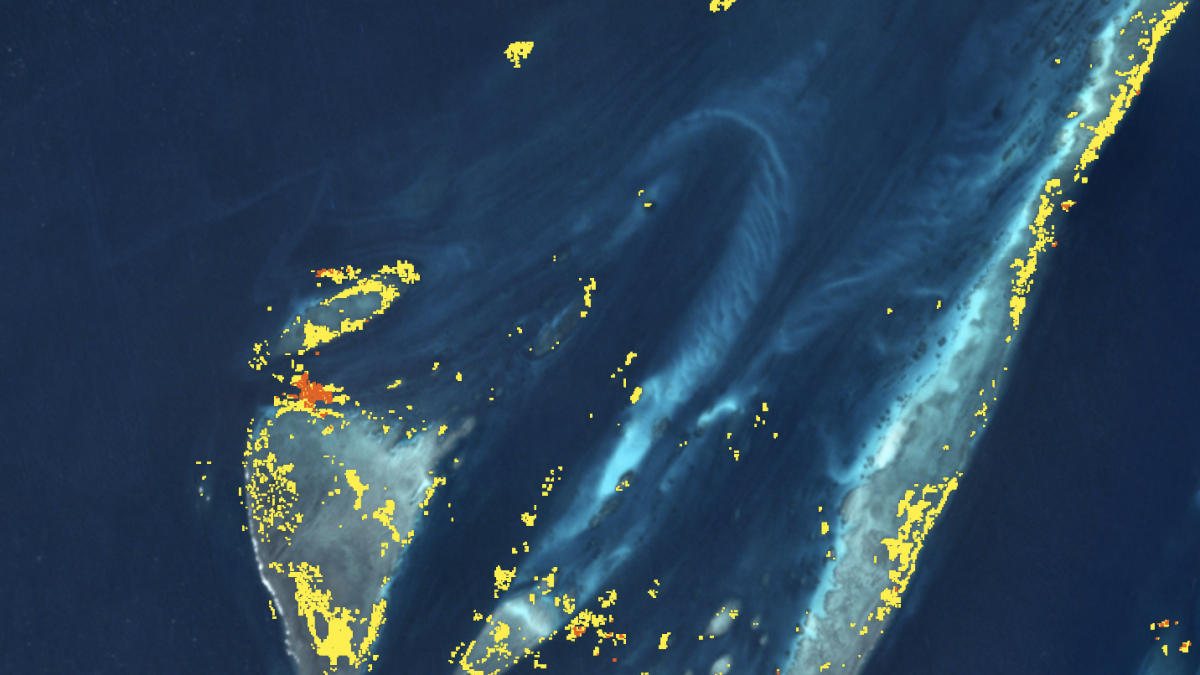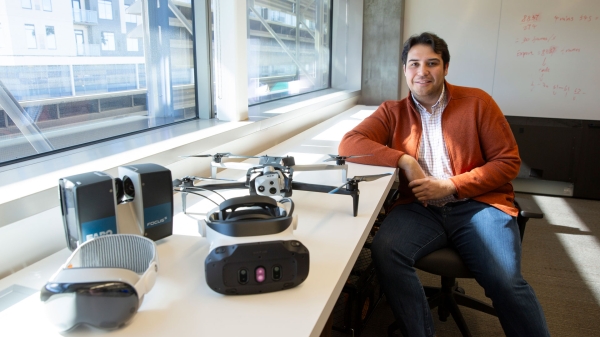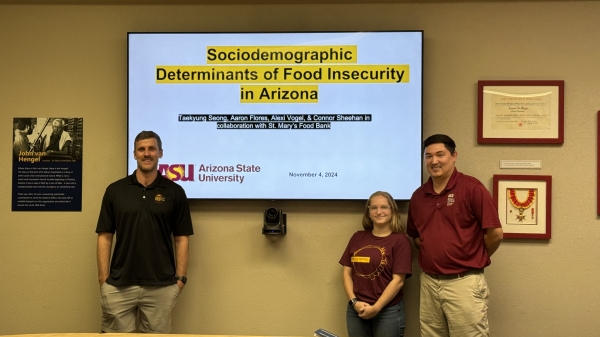ASU scientists use satellites in space to measure coral bleaching in the Great Barrier Reef

Coral bleaching in the Great Barrier Reef as detected by the Allen Coral Atlas, week ending Feb. 28.
Off the coast of Australia, the sixth wonder of the world sits below the waves, both beautiful and critical to our planet. There, the marine ecosystem of the Great Barrier Reef captures carbon through seagrass and mangroves, generates significant economic activity through tourism, protects the coastline from storms and wave erosion, and supports thousands of marine species.
But experts are warning of a critical threat against this underwater wonder. Recently, leading coral scientist Professor Terry Hughes of James Cook University in Queensland, Australia, raised the alarm that the Great Barrier Reef is at the beginning of its sixth mass bleaching event since 1998, with the Great Barrier Reef Marine Park Authority adding that low and moderate bleaching is being reported for different areas of the marine region. For some corals, this bleaching could be a death sentence.
In 2021, Arizona State University's Center for Global Discovery and Conservation Science released a beta global bleaching monitoring system to keep tabs on a similar problem in Hawaii. Now, the first-of-its-kind monitoring system has been added to a suite of data products on the Allen Coral Atlas, a global mapping and monitoring data resource led by ASU in partnership with Coral Reef Alliance, Planet, the University of Queensland and Vulcan.
“The monitoring system’s development began with our team in Hawaii in response to the islands’ 2019 bleaching event,” explains Greg Asner, managing director of the atlas and director of the Center for Global Discovery and Conservation Science. “The algorithm was originally created using advanced airborne imaging techniques and has been further developed to capture a picture of coral health at a global scale. This allows teams from around the world to monitor the Great Barrier Reef’s bleaching event.”
The Global Airborne Observatory, ASU’s very own “lab in the sky,” uses hyperspectral remote sensing to capture maps of the coast and identify bleaching versus healthy corals. Watching from satellites in space, the algorithm dives below the waves and identifies low, moderate and severe bleaching levels. And it could be just what is needed to turn the tide and save the underwater ecosystem of the Great Barrier Reef.
Gabi Bonelli, a postdoctoral researcher on the Atlas project, explained how the bleaching system works: “Our algorithm measures the temporal change, or how coral brightness changes over time. While the bleaching event in the Great Barrier Reef is tragic, it provides our team with an opportunity to validate and improve our algorithm to better combat coral bleaching in the future.”
In the coming weeks, anyone can use the Allen Coral Atlas to monitor coral bleaching in the Great Barrier Reef.
More Science and technology

Teaching construction realities with virtual environments
Visiting a construction site is a valuable learning opportunity for students who want to one day work in the industry.…
ASU, Mexico partner to build next generation of chipmakers, drive semiconductor innovation
Thousands of college students in Mexico will soon have the opportunity to enroll in Arizona State University’s new, free online…

ASU, St. Mary’s Food Bank partner to tackle food insecurity in Arizona
Arizona State University and St. Mary’s Food Bank (SMFB) have joined forces to create an interactive data dashboard that tracks…